|
The paper is out! Finally! After almost 2 years we can finally talk openly about the amazing observations we obtained with H.E.S.S. in our campaign in late autumn 2019. A bit of context: we have been trying to catch very-high-energy gamma-ray emission from a Gamma-Ray Burst (GRB) since the dawn of Imaging Air Cherenkov Telescopes, i.e. since over two decades. The GRB program of H.E.S.S. is the longest running observation program of the collaboration. Every year for almost 20 years, the observations and trigger conditions are discussed and updated and students sign up every month for 'expert-on-call' shifts that mean that they'll be woken up in the middle of the night to guide the on-site shift crew in GRB observations, These efforts came finally to fruition with the H.E.S.S. observations of GRB 180720B, the first detection of a GRB by an IACT ever. Rather surprisingly, these observations were made several hours after the burst in the period of fading X-ray emission called the afterglow. More in line with expectations, a few months later MAGIC detected a strikingly strong signal from GRB 190114C in the first minutes after the burst. Two bursts in ~20 years... Artist's impression of a relativistic jet of a gamma-ray burst (GRB), breaking out of a collapsing star, and emitting very-high-energy photons. Credit: DESY, Science Communication Lab In the evening of August 29, 2019 a GRB was detected by the Fermi and shortly later by the Swift X-ray satellites. Business as usual for the H.E.S.S. Transients group (that was still part of the larger Extragalactic Science group at that time): the automatic VoSystem calculated the best time window for H.E.S.S. observations which started roughly 4h30 after the burst. To make things more complex multiple ToO programs (including a Galactic Nova outburst and an AGN flaring activity) requested observations for the same night. These conflicts could be settled and observations on the GRB were scheduled. Sidenote: the observations were almost cancelled because the shift crew confused a retraction of a GW event by Virgo/LIGO with a retraction of the GRB. Luckily our expert-on-call (Quentin, a PhD student from LAPP/Annecy) reacted quickly and clarified the situation. So far so good. Although the next day was Saturday I got up early to drive my son and some friends to a basketball camp. This plan fell apart as soon as I checked the shift report from the last night. A signal in the real-time analysis during the observations of the GRB had caused the shift crew and the expert-on-call to extend the observations beyond the originally scheduled window! A frantic checking of the data quality and analysis results followed. Luckily a family friend jumped in to take care of the basketball players in the meantime ;-) I quickly drafted a text for a GCN circular and Astronomers Telegram to allow for our friends operating telescopes in South America to react while it was still dark enough for observations. Maybe I should have stopped for a while and got some coffee: it might have prevented me messing up the dates mention in the GCN/ATEL: the observations took well place in August and not July 🤦♂️. The rest is history... We continued to observe the region of the burst for several days 'just in case', set up an analysis team, rapidly retrieved the data from Namibia (using our lessons learned from GW170817), went through a long list of data quality checks before unblinding the high level analyses. I signed up to conduct one of the two independent analyses, the other one (which would in the end be used for the plots in the paper) was led by Edna (PhD student at MPIK, Heidelberg). Towards the end of the year we had a first meeting in Desy-Zeuthen to compare the results of the two analyses. In preparation of the meeting (i.e. the night before in my hotel room in Berlin) I ran the analysis for the first time on an extended dataset beyond the first two nights of observations. To my surprise I found a signal even in the third night of data taking! In total we could follow the emission for over 56h! This really shattered (at least my own) earlier expectations and extrapolations from Fermi-LAT observations which rather pointed to timescales of minutes for the emission of high-energy photons from GRBs... The light-curve of GRB 190829A in X-rays and VHE gamma-rays (red points). For the first time we could follow the evolution of the emission over several days and show the similarity between the two energy domains. From Science, 2021 We then finalized the analyses and verified that both pipelines gave consistent results, which in the end took a few extra months due to some (in the end very minor) bugs/updates/changes/etc. in the software frameworks. But the fun was not over yet: the theoretical models based on inverse Compton emission that we just had "confirmed" with the papers on GRB 180720B and the MAGIC paper on GRB 190114C, did not fit the high resolution energy spectrum that we managed to derive due to the proximity of the burst. The "modelling group" led by Andrew from Desy-Zeuthen realized that we indeed may need to let go of one of the fundamental limits of synchrotron emission of high-energy electrons. This “burn-off limit” is determined by the balance of acceleration and cooling of the electrons within the accelerating region. Neglecting it allowed to describe the measured gamma-ray energy spectrum almost perfectly... Is this possible? Probably yes, but it would require a more complex configuration of different regions responsible for the acceleration and the synchrotron emission. Maybe also some completely different explanation is possible. Time and a lot of effort by the world-wide community will tell... The energy spectrum of GRB 190829A in the X-ray (gray butterflies) and VHE gamma-ray domains (red butterflies) are strikingly similar and cannot easily be explained by the usually used SSC description (blue bands). Removing the constrains on the maximum energy of the accelerated electrons allows to fit both domains as pure synchrotron radiation. From Science, 2021 In the meantime we are updating the H.E.S.S. observation program with the lessons learned from GRB 190829A to increase our changes for additional GRB observations and prepare the observations with the Cherenkov Telescope Array and especially with the first Large Size Telescope that is already taking data on La Palma. Exciting times! Stay tuned... The paper is available here: science.sciencemag.org/cgi/doi/10.1126/science.abe8560 and don't miss the phenomenal animation done by DESY, Science Communication Lab: A few other articles on the results:
0 Comments
This post is mainly based on the "Source of the Month" article that I wrote together with Gavin Rowell and which was published on the website of the H.E.S.S. Collaboration. Magnetars are very highly magnetised neutron stars with a surface magnetic field reaching 10^15 Gauss, about 1000x stronger than that derived for 'normal' neutron stars, and among the strongest magnetic fields found in the universe.. They power the so-called soft gamma repeaters (SGRs) and anomalous X-ray pulsars (AXPs), which are well-known for their irregular bursts in X-rays and soft-gamma-rays. During the short (faster than minutes) bursts, the brightness can increase by a factor of 1000 or more. There are only 29 SGRs and AXPs catalogued so far (1). Following its discovery in 2016, SGR J1935+2154 has become probably the most burst-active SGR, emitting dozens of X-ray bursts over the past few years (2) . SGR J1935+2154 has been associated with the middle-aged SNR G57.2+0.8 at a distance of about 6.6 kpc (3) as shown in Fig. 1. Fig.1 SNR G57.2+-0.8 in X-rays (cyan: XMM-Newton 0.4-7.2 keV) and radio (red: THOR VLA 1.4 GHz). The bright X-ray central source is SGRJ1935+2154 and the cross indicates a 1720 MHz OH maser tracing an SNR shock interaction with an adjacent molecular cloud. From Zhou et al. 2020 (3). Following two alerts on 27 April (2020 the first at UT 18:26) from Swift-BAT spaced apart by only 6 minutes, H.E.S.S. observed SGR J1935+2154 for 2hrs on the night of 27/28 April 2020 covering the UT 01:55 to 03:53 period of 28 April 2020. Later that night Swift reported a "forest of bursts from SGR J1935+2154" (4) which was observed just after the initial BAT trigger at UT 18:26. This forest of bursts lasted for about 7 hours and stopped about 1 hour prior to the H.E.S.S. observation window. A more complete list of Swift-BAT bursts is given in (5). Swift, and many other X-ray and soft-gamma-ray telescopes (Fermi-GBM, INTEGRAL, sAGILE, HXMT, Konus-Wind, NICER) have also reported intense activity over this and the following period into late May. Fig. 2 shows the burst history of SGR J1935+2154 compared to the H.E.S.S. observation window. Fig. 2. Left : Multi-year burst history of SGR J1935+2154. Right : Burst history of SGR J1935+2154 zoomed in around the H.E.S.S. 2hr observation window (orange dashed line and green shaded region). Included are the two radio bursts seen by CHIME + STARE2 and FAST discussed below. While this high energy photon activity from SGR J1935+2154 was certainly interesting in its own right, the situation became considerably more notable with the detection of short, intense radio bursts from the direction of SGR J1935+2154. To-date, two millisecond-duration radio bursts have been detected - the first burst by CHIME and STARE2 (6,7), and the second burst by FAST (8). When removing the dispersion delay, the timing of the first radio burst appears to line up very well with one of the bright X-ray bursts seen by INTEGRAL and the Insight-HXMT (9, 10). This overlap is now seen as the first convincing evidence that magnetars are linked to FRBs, or at least, to repeating FRBs. Fig. 3 below shows that CHIME measured two components within the first radio burst seen from SGR J1935+2154. The energy of the burst is about 10^34-10^35 ergs, just below the low end of the extragalactic FRBs distribution observed so far. This discrepancy is likely due to the sensitivity limits of current radio telescopes, thereby biasing towards detection of energetic extragalactic FRBs (6). Fig.3 Left : CHIME "Waterfall" plot of the first radio burst from SGR J1935+2154 showing the two-component structure. Right : Comparison of the radio burst fluence and energy vs. distance with bursts from a variety of other compact sources. Plots from CHIME/FRB Collab. 2020 (6). Fast radio bursts (FRBs) have been one of astronomy's major mysteries since the first accepted example was revealed in 2007 (11) from a burst that actually had occurred in 2001 (radio bursts from M87 reported by (12) in 1980 may in fact be the first examples). Now, over 150 FRBs have been discovered (13), with a small fraction exhibiting repeating radio bursts or even periodicity. Some observational progress in recent years was made via radio interferometric observations, locating FRB predominately towards the outer regions of galaxies within the spiral arms or beyond the central bulge (14). In parallel, radio data analysis pipelines have been tailored to searches for short bursts in almost real-time thus allowing to emit alerts and subsequent searches for emission in other wavelength bands. Although the time-compact nature (milliseconds duration) and burst statistics of FRBs has pointed to a physical link with stellar remnant compact objects such as magnetars (e.g. 15) , the lack of non-radio counterparts to any FRB hampered progress in unambiguously linking them to specific objects. This all changed on 28 April 2020 with the observations of a simultaneous X-ray and radio burst from magnetar SGR J1935+2154. H.E.S.S. searches for VHE emission from FRBs Since the discovery of FRBs, the global astrophysics community is pursuing significant efforts to pin-point the origins of these enigmatic radio pulses. The H.E.S.S. collaboration has a long history in these searches. Since 2014 several partnerships with some of the most sensitive radio observatories like Parkes or UTMOST have allowed to conduct searches for delayed or afterglow emission of FRBs in the VHE domain. The first such search was conducted following the detection of FRB 150418 by the SUPERB team at Parkes and has been published by the H.E.S.S. collaboration in (16). Another, complementary, way to search for MWL emission from various transients and in particular from FRBs, is through coordinated campaigns of various observatories scanning the same part of the sky simultaneously. The most extensive of these endeavors are the Deeper-Wider-Faster campaigns (17) in which H.E.S.S. participates. Since the detection of repeating FRBs like FRB121102 and more recently FRB171019, which is conveniently located in the Southern hemisphere, coordinated MWL campaigns of several instruments can also be tailored to cover these special targets, another attempt which the H.E.S.S. collaboration is actively pursuing. In parallel, H.E.S.S. has been running a target of opportunity (ToO) program tailored to searches for VHE emission from SGRs for many years, using Swift-BAT to provide prompt and afterglow triggers for H.E.S.S. Since 2019, we have extended the program to include a dedicated, automatic analysis of data from Fermi-LAT (18) to guide the H.E.S.S. observations. Alerts on activity of several SGRs and AXPs have been received since 2018, but H.E.S.S. observation conditions had not been favorable. The Swift-BAT alerts from SGR 1935+2154 received on 27 April 2020 was the first time H.E.S.S. was able to observe an SGR under this ToO programme. As shown in Fig. 2 right panel, almost all of the X-ray and radio bursts occurred outside the H.E.S.S. observation window which lasted 2h, however one of the INTEGRAL bursts, burst 'A' as denoted by (9), just overlaps the end of the H.E.S.S. observations. A first analysis of the H.E.S.S. data searching for VHE gamma-ray emission at various timescales has been performed by my PhD student Halim Ashkar. Analyzing the data as a whole (i.e. the total 2h) and searching for variability or short spikes down to timescales of a few minutes, no significant signal could be found. Further analyses related to the INTEGRAL burst 'A' and covering shorter timescales have started. The H.E.S.S. observations at VHE energies of SGR J1935+2154 will be important to constrain the particle acceleration scenarios of magnetars. Relying on very basic assumptions, the X-ray bursts could be indicators for surges in particle acceleration. Should the accelerated particles reach TeV or higher energies during the burst, VHE gamma-ray emission may arise from inverse-Compton scattering of electrons, or from protons colliding with surrounding plasma. On the other hand, pair production and photon splitting could result in significant energy losses for the VHE gamma-rays and typically lead to strong cutoffs in the MeV to GeV energy range. The flux suppression could be avoided in scenarios where the gamma rays are generated well away from the magnetar's intense magnetic field (cf. 19). The H.E.S.S. observations can therefore also probe the particle transport aspects (such as outflows) in the vicinity of SGR 1935+2154 during the recent flaring episode. References
(1) McGill Magentar Catalogue: http://www.physics.mcgill.ca/~pulsar/magnetar/main.html (2) Lin L. et al 893, 156 (2020) (3) Zhou P. et al (2020) https://arxiv.org/abs/2005.03517 (4) ATel 13675 : http://www.astronomerstelegram.org/?read=13675 (5) ATel 13758 : http://www.astronomerstelegram.org/?read=13758 (6) CHIME/FRB collab. (Science submitted) arXiv:2005.10324 (2020); ATel 16381 : http://www.astronomerstelegram.org/?read=13681 (7) ATel 13684 : http://www.astronomerstelegram.org/?read=13684 (8) ATel 13699 : http://www.astronomerstelegram.org/?read=13699 (9) Mereghetti S. et al. ApJ Lett (submitted) arXiv:2005.06335 (2020) (10) HXMT SGR J1935+2154 burst list : http://enghxmt.ihep.ac.cn/bfy/331.jhtml; ATel : 13692 http://www.astronomerstelegram.org/?read=13692 (11) Lorimer D. et al. Science 318, 777 (2007). (12) Linscott I., Erkes J. 1980 ApJ Lett 236, L109 (1980) (13) FRBCat: http://frbcat.org/ (14) Bannister K. et al. Science 365, 565 (2019) (15) Wadiasingh Z. et al. ApJ 879, 4 (2019) (16) H. Abdalla et al. (H.E.S.S. Collaboration), A&A 597, id.A115 (17) I. Andreoni and J. Cooke, Proc. IAU Symposium, Volume 339, pp. 135-138 (18) J.-P. Lenain, Astronomy and Computing, Volume 22, p. 9-15. (19) Kun H., et al MNRAS 486, 3327 (2019) On August 17, 2017, the gravitational wave interferometers Advanced Ligo and Advanced Virgo recorded a signal from the merger of a binary neutron star system, a type of signal that had never been seen before. Complementing this exciting discovery, a large variety of electromagnetic observations were able to record signals from the same event. They range from the detection of a gamma-ray burst about 2 seconds after the gravitational wave event, over near-infrared, optical and UV emission from decay of radioactive nuclei created in the resulting kilonova to X-ray and radio emissions detected several days and weeks after the event. This first and extremely successful observation campaign is marking the beginning of multi-messenger astrophysics. Observatories that participated in the observations following the detection of gravitational waves from the merger of a binary neutron star system. Can you spot H.E.S.S.? Source: LIGO/Virgo The gravitational wave event was localized within a region of about 30 square degrees, well beyond the H.E.S.S. field of view and requiring multiple pointings to cover the area. We (Monica, my PhD student and myself) rushed to apply the target selection algorithms that we had prepared and identified regions of high probability to find a counterpart of the gravitational wave event. We were able to request H.E.S.S. observations in record time (only 5minutes after the publication of the localisation of the gravitational wave event by Virgo/Ligo!!). Our observations thus started only 5.3h after the gravitational wave event GW170817. The covered regions already contained the counterpart SSS17a that has later been identified in the optical domain, several hours after our observations (see Figure below). As a result, H.E.S.S. was the first ground-based pointing instrument to obtain data on this object. A subsequent monitoring campaign with the H.E.S.S. telescopes extended over several days, covering timescales from 0.22 to 5.2 days and energy ranges between 270 GeV to 8.55 TeV. No significant gamma-ray emission has been found within this time interval. The derived upper limits on the very-high-energy gamma-ray flux for the first time constrain non-thermal, high-energy emission following the merger of a confirmed binary neutron star system, and further observations of this source will allow to check whether TeV energies are reached on a larger time scale. Left: Pointing directions of the first night of H.E.S.S. follow-up observations starting August 17, 2017, at 17:59 UTC. The circles illustrate a FoV with radius of 1.5 deg and the shown times are the starting times of each observation with respect to GW170817. The localisation map of GW170817 is shown as colored background, the red lines denote the uncertainty contours of GRB170817A. Right: Map of significances of the gamma-ray emission in the region around SSS17a obtained during the first H.E.S.S. observation of GW170817. The white circle has a diameter of 0.1deg, corresponding to the H.E.S.S. point spread function and also used for the oversampling of the map. Figure from Abdalla et al. (H.E.S.S. Collaboration), submitted to ApJL Following the observations, we rapidly transferred the data from Namibia to Europe for analysis. After some troubles due to hard-drives that were crushed during the shipping, we managed to carefully analyse the dataset in record time. In parallel we prepared a publication that (again in record time) has been submitted to ApJLetters right in time for the announcement of the gravitational wave event and the extensive follow-up campaign. The paper can be found on the arXiv tonight. For the very impatient ones it is already available on the H.E.S.S. website (incl. a short news article I wrote).
We also were able to contribute to a paper that has been prepared jointly by all observatories and collaborations contributing to these unprecedented observations. This paper can be found here: "Multi-messenger observations of a Binary Neutron Star Merger". It is definitely a milestone in astrophysics and will be regarded as the birth of multi-messenger astrophysics... After spending several years on the preparation of the H.E.S.S. multi-messenger program (see Multimessenger searches for more details), this event together with the multi-messenger and multi-wavelength observation campaign and the successful H.E.S.S. participation is extremely exiting and rewarding for my colleagues, friends and me personally... The dreams we were chasing for the last years (and that have been treated as such by many within the more main-stream astrophysics community) have suddenly materialized and become a reality. Exciting times ahead: the Virgo and Ligo interferometers are currently not taking data but are undergoing upgrades and further improvements. They should be restarting physics observations in summer 2018 with the prospect to detect many more events of this kind. After the frenzy of the weeks since the detection of GW170817, this break is obviously highly appreciated ;-) We'll also use it to further improve the response of high-energy gamma-ray instruments like H.E.S.S., CTA and HAWC to these events. You can even become part of this endeavor: see Team / open positions for details and don't hesitate to contact me (Contact). Exciting times ahead... Astronomical instruments are expensive. Satellites are even more expensive. Optimizing the data taking and making the most out of the available observations is therefore an important process. The XMM-Newton X-ray satellite has illustrated this by publishing its second "Second Slew Survey Catalog". Typically ground and space borne observatories perform pointed observations of a pre-defined list of interesting regions and objects. The time spent moving the instrument from one direction to the next is usually called dead-time and disregarded. The ESA led XMM-Newton satellite continues data taking during the slewing and the team managed to carefully analyse the obtained data and extract very useful information. The resulting source catalog contains ~70.000 sources detected during the slewing and represents ~10% of all XMM detected sources. The analysis add data to some old friends of mine: star-and-black hole binary systems like GRS 1915+105 and V 4641 Sgr (see Microquasars for a recent H.E.S.S./RXTE analysis of these objects). Sidenote: The operation mode of current TeV gamma-ray Cherenkov telescopes does not allow for data taking during slewing (the cameras are switched off in order to prevent damage due to bright stars passing through the field-of-view). On the other hand, the upcoming Cherenkov Telescope Array (CTA) will be able to continuously take data and one can imaging a future "CTA Slew Survey Catalog"...
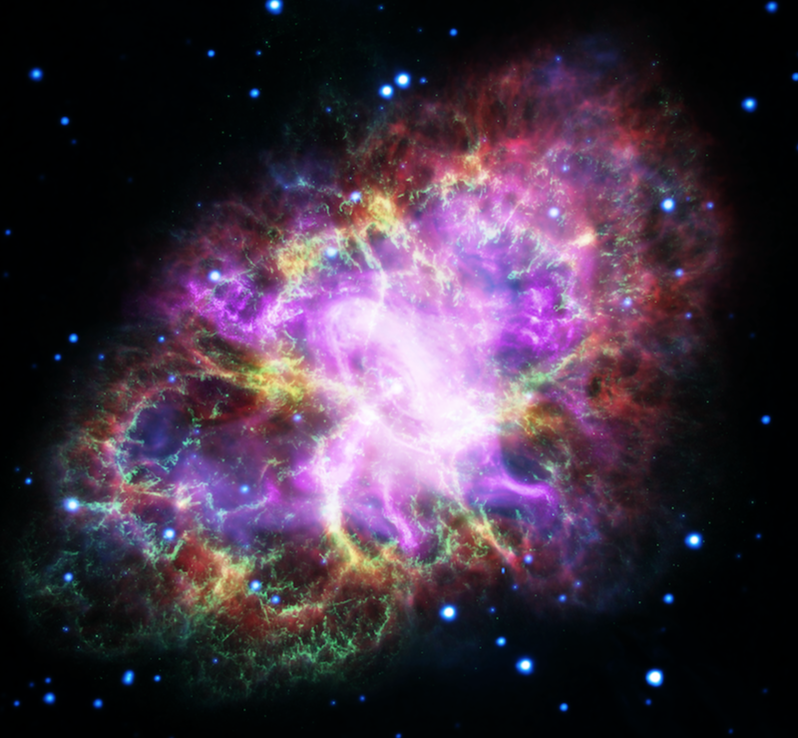 Combining data from various observatories covering (almost) the full electromagnetic spectrum, a new, very detailed and beautiful image of the Crab Nebula has been produced. See the NASA website for details. The individual ingredients are highlighted in the video below: This video starts with a composite image of the Crab Nebula, a supernova remnant that was assembled by combining data from five telescopes spanning nearly the entire breadth of the electromagnetic spectrum: the Very Large Array, the Spitzer Space Telescope, the Hubble Space Telescope, the XMM-Newton Observatory, and the Chandra X-ray Observatory. The video dissolves to the red-colored radio-light view that shows how a neutron star’s fierce “wind” of charged particles from the central neutron star energized the nebula, causing it to emit the radio waves. The yellow-colored infrared image includes the glow of dust particles absorbing ultraviolet and visible light. The green-colored Hubble visible-light image offers a very sharp view of hot filamentary structures that permeate this nebula. The blue-colored ultraviolet image and the purple-colored X-ray image shows the effect of an energetic cloud of electrons driven by a rapidly rotating neutron star at the center of the nebula. Credits: NASA, ESA, J. DePasquale (STScI) The Crab Nebula was the first astrophysical object observed in TeV gamma-rays. This breakthrough measurement was performed with the Whipple Observatory (using a 10-meter mirror and a 37-pixel camera) and was announced in July 1989 ("Observation of TeV gamma rays from the Crab nebula using the atmospheric Cerenkov imaging technique" – APJ 342 (1989) 379-395). Until today the Crab nebula is used as 'standard candle' and calibration source in high-energy gamma-ray astronomy. A recent example can be found in this paper from the HAWC Collaboration: Observation of the Crab Nebula with the HAWC Gamma-Ray Observatory.
|
AuthorMyself ;-) Archives
January 2024
Categories
All
|
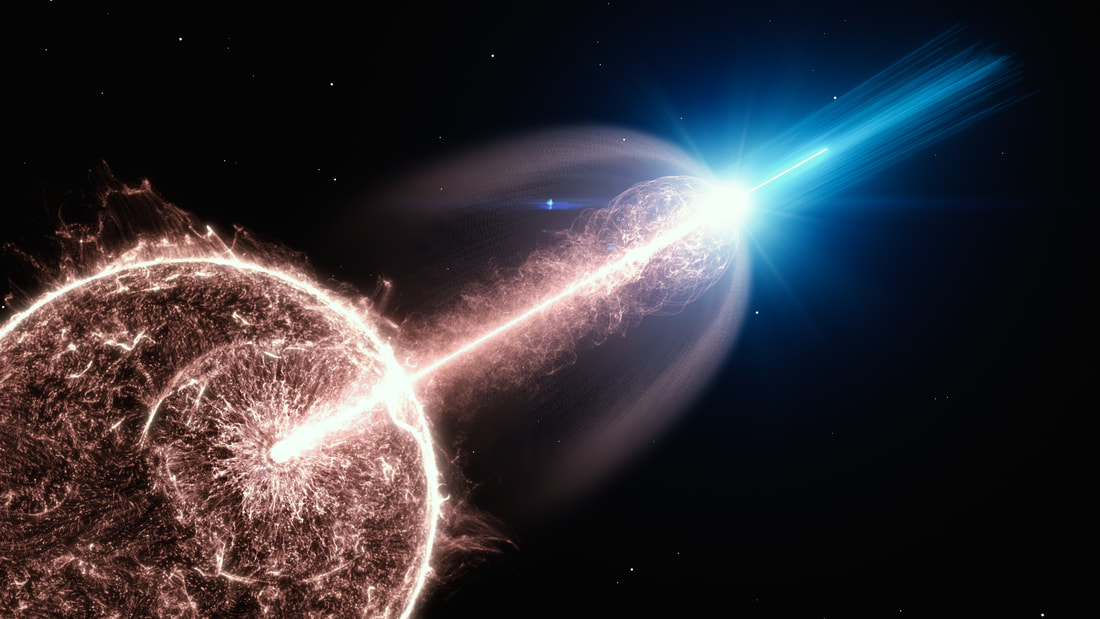
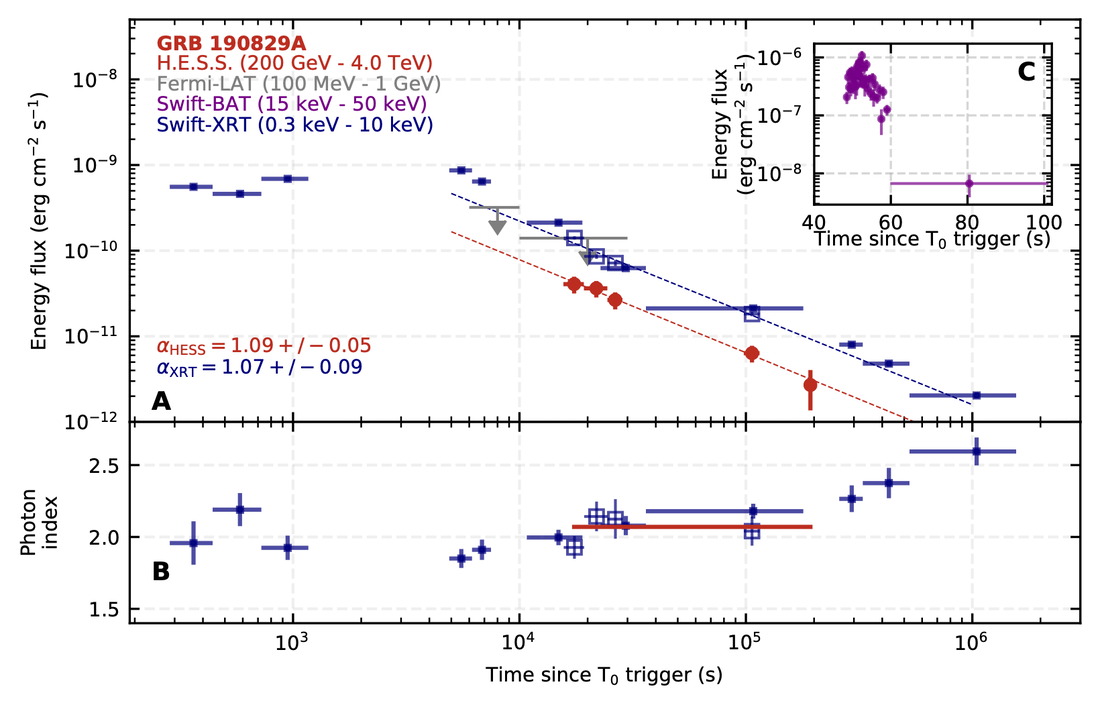
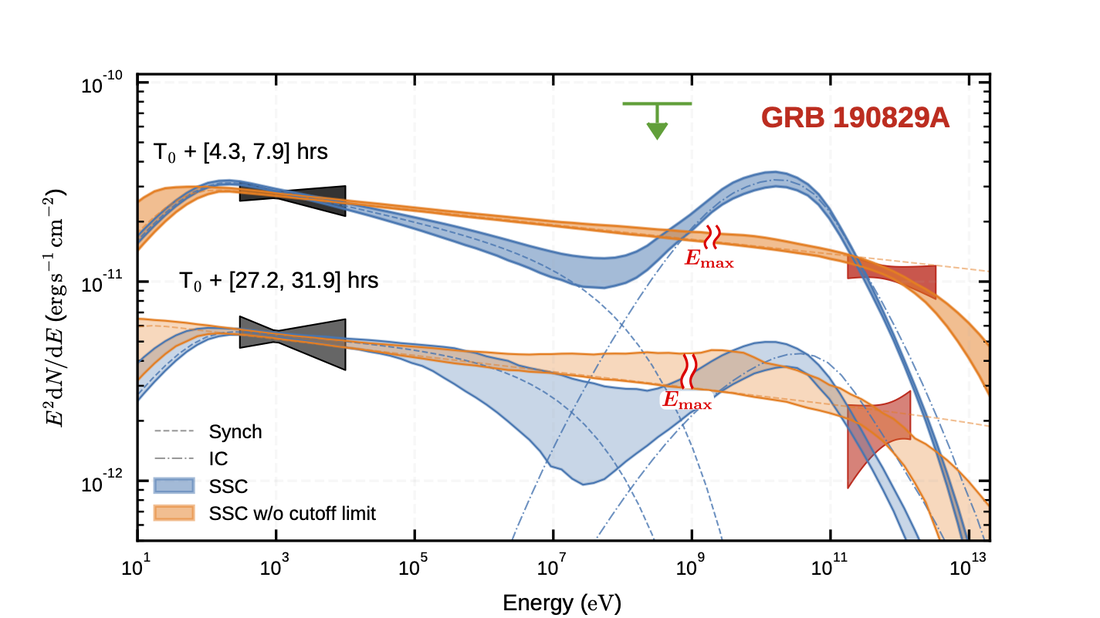
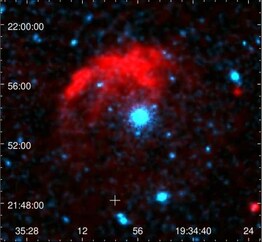
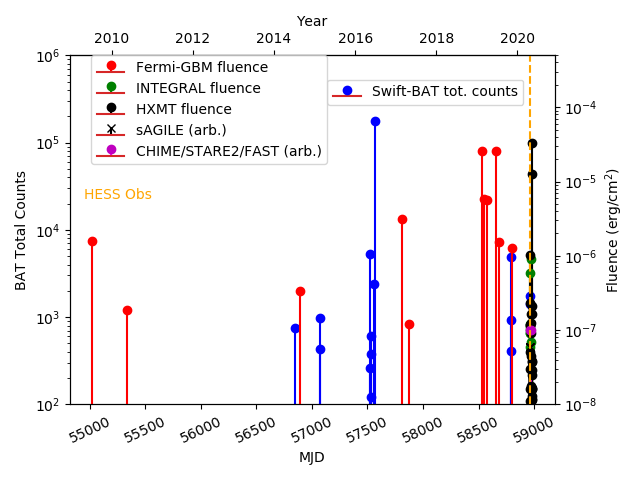
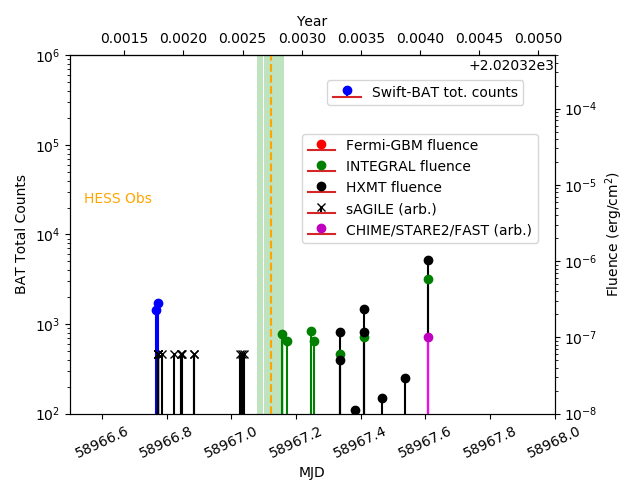
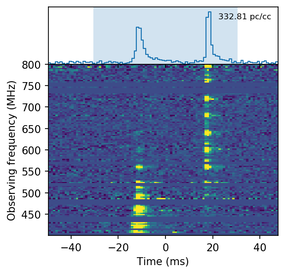
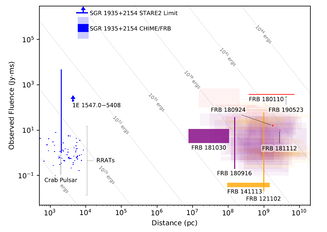
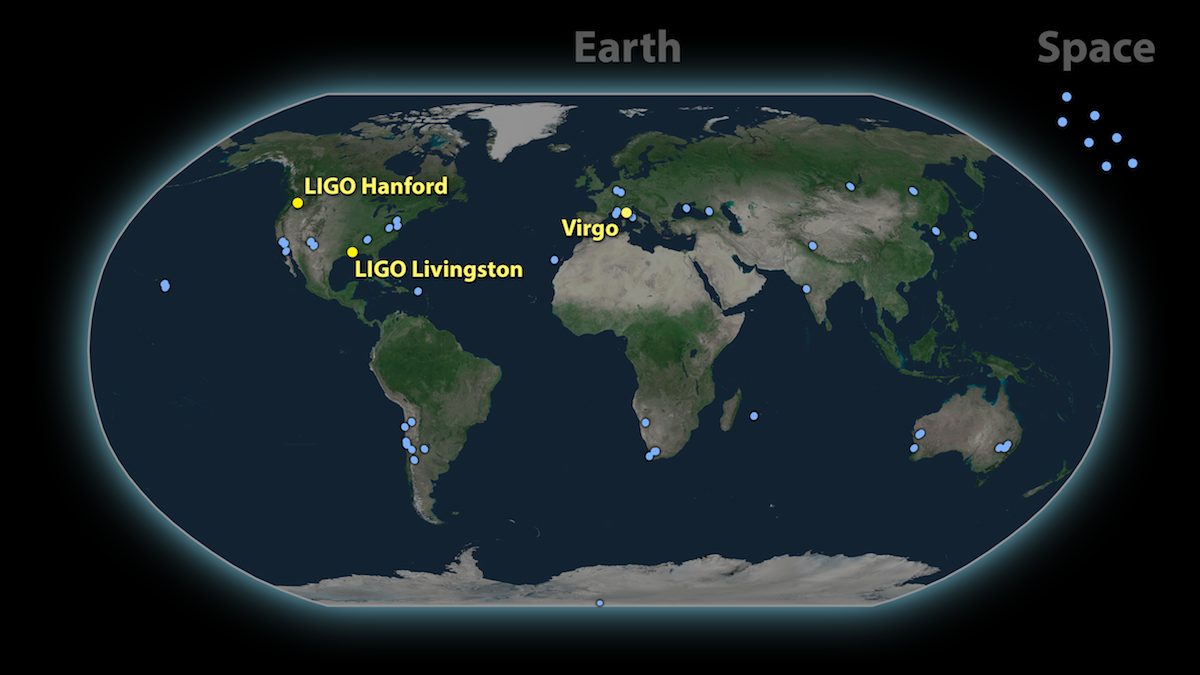
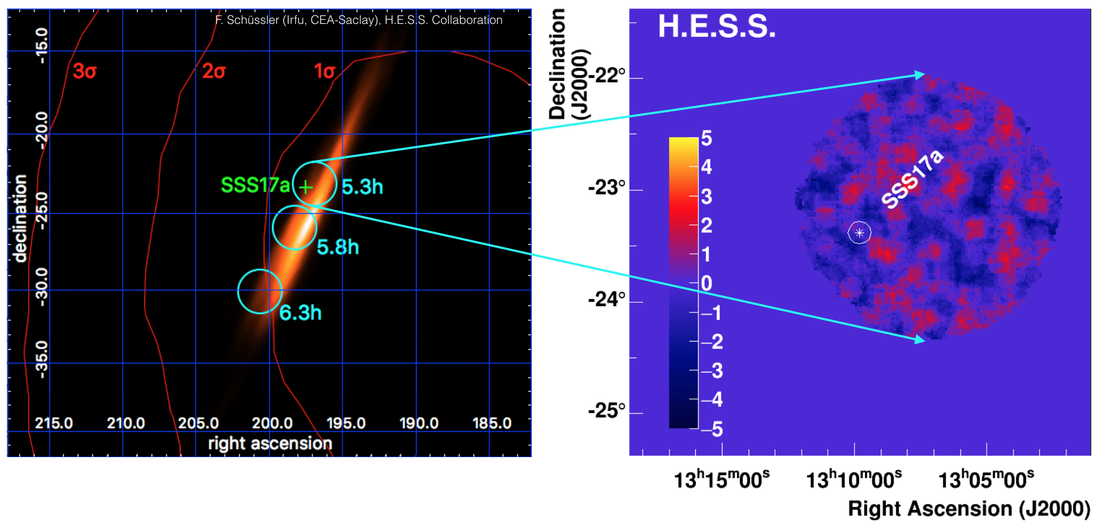
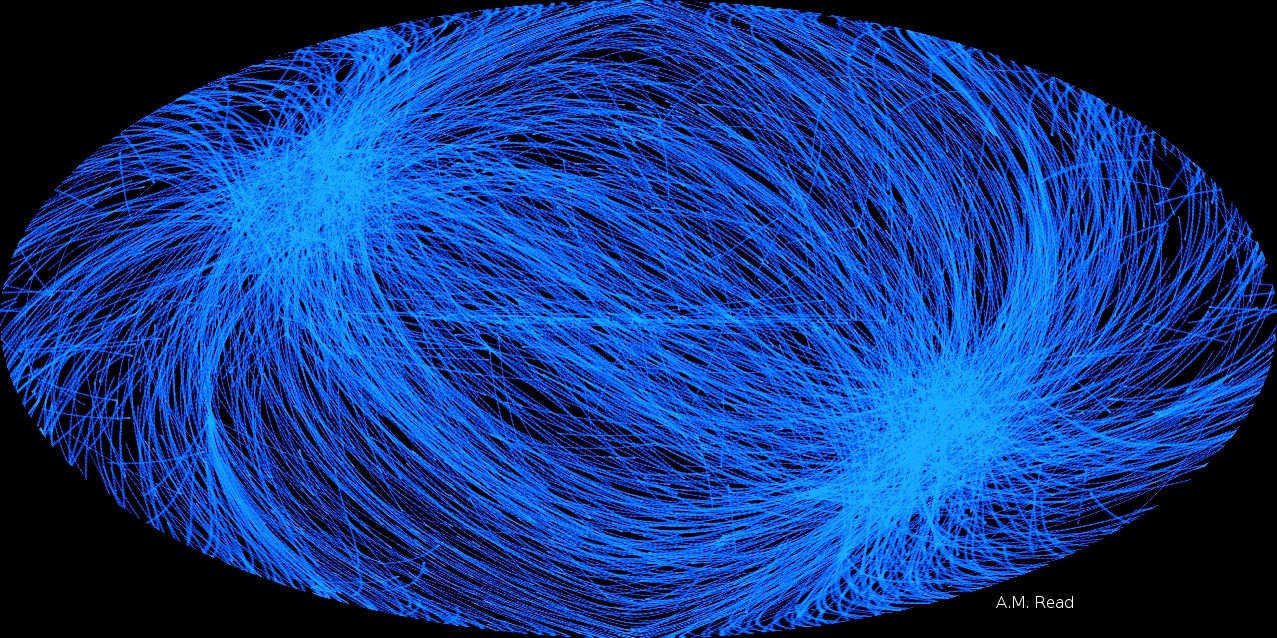
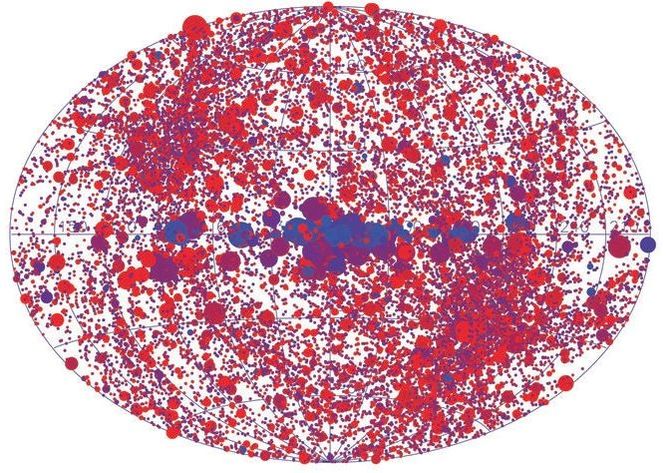
 RSS Feed
RSS Feed